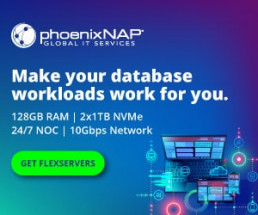Data Center Tier Classification Levels Explained (Tier 1, 2, 3, 4)
Your choice between data center types is as important as your choice of a server regarding web hosting.
The right server in the wrong location means lousy performance. Fortunately, there is a system in place for your business to make the most informed decision.
You might think to yourself that all data centers must be alike, save for a few localized differences or independent security measures. You would be quite far from the truth in this assumption. Choosing a data center solution that is right for your business is much more straightforward once you understand the concept of “Tiers.”
Tiers, or levels, are ways to differentiate the requirements of each type of data center operator, with a focus on redundant components, critical load distribution paths, cooling, and many other specifications. As it stands now, there are four tiers, and as you would expect, they are defined precisely.
The Global Data Center Authority’s “Uptime Institute” is responsible for the proprietary “Tier Standard System.”
Uptime is the most critical metric when regarding web hosting, though not the only one. The rating system defines a benchmark for the data center industry.
Most experts agree that the standardized system has been well received. Here we take a look at the tiers from levels 1 through 4 (often displayed with Roman Numerals as I through IV). We will also discuss what to look for when examining data center power and infrastructure for your business.

What Are Data Center Tier Ratings?
The classification levels of data centers represent a certification of design. A tier is another way of saying “level of service.”
The 4 tiers of data centers are:
- Tier 1 Data Center
- Tier 2 Data Center
- Tier 3 Data Center
- Tier 4 Data Center
The Uptime Institute does not tell anyone exactly how it defines tiers, though the most important metrics are made public. These metrics include redundant electrical path for power, uptime guarantee, cooling capacity, and concurrent maintainability, to name a few.
Background of Data Center Tiers & Levels
The Telecommunications Industry Association (TIA) created the first set of standards for data centers in 2005.
The Uptime Institute standard was formed separately from the TIA standard. The Institute also differed from the TIA because of its specialty in data centers whereas TIA standards could apply to many different aspects of the IT industry.
The Uptime Institute last revised its certification process most recently in July of 2015.
It was discovered that there were data centers without official rankings that were stating the Institute certified them. Much of the controversy happened between the Tier III and Tier IV rankings.
Design elements still make a difference but are not as heavily weighted. Any classification that was based solely on design is now no longer listed on the Uptime Institute website.
The percentages for each metric remain a secret of the Institute.
The Uptime Institute Chief Operating Officer addressed “Efficient IT” in a press release. The release stated that day-to-day operations for a data center now count towards rankings.
The Institute has also created an “Efficient IT Stamp of Approval” for data centers that produce efficient outcomes.
There are two levels of Efficient IT certification:
-
- Approved Status – Data centers that achieve this status are already in compliance with previous Uptime Institute standards. The stamp of approval continues for two years. After the certification expires, the center must be re-evaluated to receive another two-year accreditation.
- Activated Status – Activation means that the Institute has observed a data center moving towards higher efficiency. The Activated status is only good for a year. If a data center has not achieved efficiency excellence, it may still be awarded Activated state upon a new evaluation.
Data Center Tiers 1, 2, 3, 4 Explained
A tier 1 data center can be little more than a powered warehouse. They are not required to be very sophisticated. On the other end of the spectrum is a tier 4 data center. This tier gives its clients a guarantee of uptime and 2N (two times the amount required for operation) cooling and redundant power and infrastructure. These standards will protect most companies. Level IV clients usually never even hear if there are issues at the data center infrastructures due to these redundancies. These standards show just how reliable top-tier systems are.
Tier 2 colocation data centers are more robust than Tier I centers. Tier II does not have complicated performance hardware. For instance, level III and IV data centers require dual power inputs. Level II does not. Level II gives clients a customizable balance between cost management and performance.
A tier 3 data center can perform repairs without any notable service disruption. Another way to define a level III provider is that they offer an N+1 (the amount required for operation plus a backup) availability for clients. As with any technology product, unplanned maintenance may still cause a problem in a level III provider. In short, level III is even tolerant of some faults.
Tier 4 data centers are considered “fault tolerant.” Unplanned maintenance does not stop the flow of data to a data center Tier IV. Day-to-day operations continue regardless of any support taking place.
As you would expect, each tier has the characteristics of the levels below them. A Tier II provider, for example, will always be more reliable than a Tier I.
Availability According To Data Center Tiers
Availability levels include data from the hardware:
- Tier 1 – 99.671% Guaranteed availability
- Tier 2 – 99.741% Guaranteed availability
- Tier 3 – 99.982% Guaranteed availability
- Tier 4 – 99.995% Guaranteed availability

What is a Tier 4 Data Center?
To be defined as Tier 4, a data center must adhere to the following:
-
- Zero single points of failure. Tier IV providers have redundancies for every process and data protection stream. No single outage or error can shut down the system.
- 99.995 % uptime per annum. This is the level with the highest guaranteed uptime. It must be maintained for a center to maintain Tier IV ranking.
- 2N+1 infrastructure (two times the amount required for operation plus a backup). 2N+1 is another way of saying “fully redundant.”
- No more than 26.3 minutes of downtime per annum as a maximum figure. Providers must allow for some downtime for optimized mechanical operations; however, this annual downtime does not affect customer-facing operations.
- 96-hour power outage protection. A level IV infrastructure must have at least 96 hours of independent power to qualify at this tier. This power must not be connected to any outside source and is entirely proprietary. Some centers may have more.
Tier IV is considered an enterprise-level service. Companies without international reach and consistently high web traffic do not usually require Tier IV facilities. Tier IV has approximately twice the site infrastructure of a Tier III location.
If you need to host mission-critical servers, this is the level to use. Tier IV data centers ensure the safety of your business regardless of any mechanical failures. You will have backup systems for cooling, power, data storage, and network links. Data Center Security is compartmentalized with biometric access controls. Full fault tolerance keeps any problems from ever slowing down your business. This is true even if you host less critical servers in other tier levels.
This tier also ensures optimized efficiency. Your servers are housed in the most physically advantageous locations. This drastically extends the life of your hardware. If the temperature and humidity are kept consistent, you gain a great deal of efficiency. Even the backups and dual power sources are treated like primaries. You experience no downtime if you have to use one of these protections unexpectedly.
Of course, Tier IV colocation is also the most expensive choice. This is why this level is dominated by international brands with consistently high levels of traffic or processing demands.
What is a Tier 3 Data Center?
To be defined as Tier 3, a data center must adhere to the following:
-
- N+1 (the amount required for operation plus a backup) fault tolerance. A Tier III provider can undergo routine maintenance without a hiccup in operations. Unplanned maintenance and emergencies may cause problems that affect the system. Problems may potentially affect customer-facing operations.
- 72 hours of protection from power outages. This provider must have at least three days of exclusive power. This power cannot connect to any outside source.
- No more than 1.6 hours of downtime per annum. This downtime is allowed for purposes of maintenance and overwhelming emergency issues.
- 99.982 % uptime. This is the minimum amount of uptime that a level 3 provider can produce. The redundancies help to protect this number even if a system suffers unexpected issues.
Companies using Tier III providers are often growing companies or a business that is larger than the average SMB (Small to Medium Business). Most data center companies that are ranked by the Uptime Institute have a level III ranking.
Tier III gives you most of the features of a Tier IV infrastructure without some of the elite protections. For instance, you gain the advantage of dual power sources and redundant cooling. Your network streams are fully backed up. If your business does not need to compete on an international level against elite brands, this is a highly competitive tier.
Are you concerned with efficiency?
Level III should be the lowest that you go. Guaranteed uptime is slightly less than Tier IV, and the system is not entirely fault-tolerant. If you do not expect to be targeted by malicious hackers or competitors, you may not need to move any higher than level III.
Tier III is also less expensive than IV. You may choose this tier due to budget constraints with a plan to expand into a higher level later.
What is a Tier 2 Data Center?
To be defined as Tier 2, a data center must adhere to the following:
-
- No more than 22 hours of downtime per annum. There is a considerable jump between levels II and III regarding downtime. Redundancy is one of the primary reasons for this.
- 99.741 % uptime per annum. This is a minimum amount of uptime that this provider can produce in a year.
- Partial cooling and multiple power redundancies. A Tier II provider does not enjoy redundancy in all areas of operation. The most critical aspects of its mechanical structure receive priority. These two aspects are power and cooling distribution. Redundancy in these areas is only partial. No part of the system is fault tolerant.
Tier II data centers are often targeted to SMB sized business clients. There are more guarantees of efficiency than a level II system. Tier II providers are also able to handle more clients.
Small business servers typically use this level. There is a massive decline in features from levels III to II. The utility is fundamentally different. If your business prioritizes redundant capacity components, then you may want to look at this level of infrastructure.
Companies with the web traffic that coincides with a small business are best suited for this tier. It is significantly less expensive than Tier III in most cases.
What is a Tier 1 Data Center?
To be defined as Data Center Tier 1, a data center must adhere to the following:
-
- No more than 28.8 hours of downtime per annum. These facilities are allowed the highest amount of downtime of any level.
- Zero redundancy. This level of a facility does not have redundancy on any part of its operations. Facilities do not have any redundancy guarantees within its power and cooling certification process.
- 99.671 % uptime per annum. This is the lowest amount of uptime that a facility graded by the Uptime Institute can produce.
If you are a small business, then Tier I may be your ideal solution. You are presumably looking for a cost-effective solution. These centers do not have many of the features that larger centers have although they may include a generator or a backup cooling system.
The use of the Tier I infrastructure designed for startup companies with a need for a colocation data center. This is the most budget conscious option for a business. Your infrastructure consists of a single uplink, a single path for power, and non-redundant servers.
Be sure that your location managers are dedicated to physical security before committing to a Tier I facility. You may also want to check the temperature and humidity of the building. A building that is appropriately maintained can avert many mechanical problems. This is especially true as facility age. If you plan on staying in this tier for an extended time, this is an essential check.

Data Center Classification Standards: Choosing the Right Tier
Data centers are not required to receive a Tier Classification System Ranking to do business.
Having a specific tier ranking does help legitimize its services, but it is not strictly required. Of the centers that have an official classification, the majority are considered enterprise level facilities.
When searching for a data center, make sure that any ranking you see comes directly from the Uptime Institute. Many companies use Uptime Institute ranking standards for their internal standardizations. However, this does not mean that the Institute has vetted them personally.
Definitions may even be “interpreted” in some cases, though this is likely a rarity. It is best to efficiently research when choosing a data center and validates all accredited certifications.
Earning an official ranking from the Uptime Institute is difficult. There is no guarantee that an investment in a center will warrant a specific classification. This is especially important to consider between the Tier III and Tier IV ranking. The investment in building out a Tier IV level facility is quite substantial. Tier III centers are often much cheaper to build and maintain.
That said, the clientele that requires a Tier IV facility will also have the budget to sustain residence. Just remember not to rely entirely on classification as the system ultimately is a pay-to-play certification.
Next, read our Data Center Migration Checklist with the best practices before making the move!
PhoenixNAP is an industry-leading global services company. Our flagship facility, the connectivity hub of the southwest in North America, meets or beats the requirements of a Tier 3+ rated facility with all systems being greater than N+1 and concurrently maintainable.
Although we have not engaged the Uptime Institute to certify our design, we welcome our customers and partners to put us to the test!
Recent Posts
Service Level Agreement Best Practices: Everything You Need to Know
Does your organization have firm ground rules regarding service delivery and client communication? Are your best practices for service level management clear?
If you want to be a quality network service provider, establishing SLA’s is a must.
The services you offer may vary from IT, hybrid cloud, hosting, internet, or anything else under the sun. Regardless of the type, you need to develop clear standards to ensure your services meet the business requirements of your clients. At the same time, you should make it a part of your strategy to do so continually.
A mutual understanding that facilitates this is called a Service Level Agreement.
The SLA helps keep service providers accountable since they agree to follow the standards set in the agreement. For example, if it says you offer 5GB worth of cloud storage, but you only provide your customer with 3GB, you will be held accountable for not keeping your end of the bargain.
What is a Service Level Agreement (SLA)?
A service level agreement is a legal contract between you and the end user.
Its primary purpose is to make sure that both parties involved agree on the services you are providing and the standards to which you will adhere.
If you did not have an SLA, you would be able to deliver your customer as little cloud storage space as you wanted to and they would not have any proof that you promised them more.
A good SLA makes expectations between the client and contractor crystal clear. It is focused on defining the service levels, availability and performance standards, as well as the company’s performance goals. It also serves to help respond to dramatic changes and ensure the client’s business operates smoothly and efficiently.
3 Types of Service Level Agreements
There are three main kinds of SLA’s. Each one provides a different purpose that depends on the service provided.
Single Service Agreement
Service Level Agreements cover a single service for each customer. For example, you might be providing IT services to a company’s human resources department, administrative department, and marketing department. A service-level agreement would apply to all three offices, and they would all follow the same guidelines.
Customer-level SLA’s
Customer-level SLA’s are individual agreements between the customer and the cloud service provider. These kinds of SLA’s often cover several requests made by the same customer. For example, you would use it if a customer needed your company’s cloud software, hosting capabilities, and IT support.
Multi-level Agreements
Multi-level Agreements are compromised of service-level, customer-level, and corporate levels. They cover general service level issues for each customer in the organization.

Establishing SLA Best Practices: 8 Elements
Each agreement consists of many essential elements that help lay down what you do and what your clients should expect. How to develop a service level agreement?
1. A description of your service
Define what your customer is getting and what they need to know about your duties. Use plain language to ensure that your agreement is easy to understand.
2. Availability
Let your customer know what level of availability you offer and how often they can use your services. Some services might only be available during specific hours. Others might be more available depending on subscription levels.
You should also include any other limitations that the customer may face. For example, you might only provide IT support to a certain number of computers unless the customer is willing to pay more money for expanded services.
3. Metrics
Measure your performance indicators by meeting specific benchmarks. Trackable metrics might range from how much cloud storage you are providing or how quickly you will provide IT duties for their laptop.
4. Support and Customer Service
Tell your customer how they can report issues and how long it takes to solve those problems. Customers will get frustrated if it takes too long to resolve their issues as such complications make it difficult for them to get what they paid for.
5. Monitoring
Let them know if performance and activity will be tracked or recorded. You often must collect data to prove that you are meeting the established metrics, but some customers will be reluctant to give up such information.
6. Duration
How long will your services last?
Is it an ongoing agreement or a monthly contract? Establish a time frame with your client so that they know how long they can use your services per the agreement. They may want to extend their contract based on their future needs.
7. Consequences for failure to meet obligations
What happens if you do not provide the expected service?
Will you reimburse the customer or make it up to them somehow? This section ensures that you will provide the services you promised or be forced to compensate the customer in some way if you do not.
8. Constraints and escape clauses
There might be situations where you cannot provide your services. An escape clause might be something as simple as your customer breaching the contract but may include other conditions such as if your provided equipment gets irreparably damaged.
Each definition should be as specific and quantifiable as possible. You want to make sure that there are no misunderstandings between you and your client.

The SMART Model of Building an SLA
You should craft your SLA with the customer’s best interests and business management objectives in mind. You want it to be easy to understand, yet comprehensive enough to cover any situations that may arise. You should write it by using the SMART method, which ensures that it is:
Simple: Your end user should have a clear understanding of everything in the agreement. Language needs to be clear and direct with no room for misinterpretation. Do not load your agreement with too many superfluous words or complex definitions.
Measurable: As mentioned earlier, you must set metrics to track how efficient your services are. Typical parameters include uptime, information security measures, defect rates, technical quality, and business results. For example, a website host’s SLA might promise an uptime of 99.999% because the client wants their site running as often as possible. Monitoring the site’s uptime helps prove that you are delivering what you promised.
Achievable: You should be realistic and set down performance and technical goals that you can effortlessly meet. Do not try to shoot for the moon if you cannot reach it. Goals that are too hard to achieve will only discourage your team members and raise your client’s expectations to unreasonable heights.
Relevant: Everything in your SLA should apply to your customer’s needs and goals. Aligning it with your user’s broader business strategy ensures that both parties will work very well together.
Time-bound Priority Level: Set time limits as to when you will fulfill your customer’s needs. Users want their services to be as quick and responsive as possible. Failing to deliver on time will result in unhappy customers that might take their business elsewhere.
All businesses are susceptible to external factors.
Many times, the cause of disruption will be entirely out of their control. Your cloud storage service might run into network issues, suffer from hardware or software failure, need to undergo scheduled maintenance to protect against DDoS attacks. These situations will cause several problems for you and your customers as they will render your services obsolete.
Determine the best ways for your team to cope with unexpected events so that you can recover quickly and efficiently. You should also define security measures and practices to prevent such incidents from happening. For example, you could establish firewalls to protect your data from potential DDoS attacks. Also, make use of our PCI Compliance checklist.
It should also provide your SLA performance requirements so that clients know how you will protect their data.
Explain how you will uphold data privacy, reliability, disaster recovery, and preservation. Ensure that your clients are also following security best practices to protect their data by taking precautions such as revoking cloud access to disgruntled former employees. You should have a disaster recovery plan to mitigate damage when tragedies occur.
Your customers are looking for a service that best fits their needs.
Whether focused on capacity planning or increasing their performance and capacity levels, they want someone who will help their business run smarter, faster, better, and more efficiently. You should already have a good idea of what your market is looking for and adjust your service level agreement to meet that demand.
Craft your SLA’s with your customers to get the best results possible.
Get a better understanding of what exactly they want out of your service. Their goals should be your goals. When your clients have reached their personal or professional milestones, that means you have achieved yours as well.
SLAs need to be reviewed and updated from time to time.
Your team should always strive to improve the way it does things, so the agreement itself will have to be adjusted whenever new practices are suggested or promised. You want to increase your productivity, efficiency, performance, flexibility, capacity, and standardization.
You will want to notify customers about any updates you made to the service level agreement, especially the ones affecting work hours, availability, turnaround time, response time, and costs. Events such as software updates and organizational changes will also prompt review.
Use whatever metrics you have to compare your performance levels to the standards you have set. These parameters might include average response time, average problem resolution time, number of requests, and so on. If you have been exceeding your goals, you could set them higher.
If your team’s efforts have been slacking, perhaps it is time to realign your strategy.
Service Level agreement can be confusing to craft, especially from scratch, but they are an essential asset for every service provider.
Without an operational level agreement in place, contractors and clients would face a lot of legal headaches. They would lack focus and would find it challenging to maintain the efficiency of their operations.
Even when you have it developed, your work on it does not stop. You need to periodically review what you have written and always be mindful of suggestions and improvements. That way, you can ensure that you are continually meeting the expectations of your clients and partners.
Recent Posts
Why Data Center Operators Fail, What You Can Do To Avoid It
From the time I began directing data center operations for a multi-tenant colocation facility, I tried to keep an eye on the little things. It is my job to make sure all of the policies and procedures are written and held to.
I’ve seen every SOP for this building and know that they are living documents that can be changed, if needed. I have tried my best to predict what could happen and mitigate it before it ever became an issue. There are plenty of sources on the internet to tell you about the big things – CMMS, DCIM, PM Schedules, Testing, Commissioning, PCI Compliance, etc. But here I am going to bring to light a few of the smaller things that usually pass under the radar, but can make or break your security reputation.
Data Center Rules: Give a Little Take a Little
I will let you in on a secret – the more precise a regulation, the more chance it has for someone to circumvent it through a technicality. And people will do it for the most profane of reasons. This is one way to go about it:
- You get every customer and employee sign the DC rules to acknowledge they have read them. Hold all employees and customers accountable, with reasonable ramifications.
- You keep them short and sweet to one page, so they are more likely to be remembered.
- And lastly, instead of listing all of the ways a person could try to work around a security checkpoint (and possibly giving them some ideas) I simply state “No user shall attempt to access areas of the building to which they are unauthorized.” If they need more access to the building locations, it is then authorized on a case by case basis.
Of course, other times you do need to be more specific.
Also, be sure to follow-up with technological and other advances: at times you need to slightly modify the rules to loosen or tighten the scope. For example, two things that weren’t an issue when the rules were first written are Google Glass, where we had to rewrite our photography/video rule a little more vaguely, and E-Cigarettes, with which we got more precise on the “Smoking” rule.
A piece of advice from me to you – when fine tuning, always think like a hacker trying to get around you on a technicality.
Equipment Is and Will Be Prone to Failure

The more a piece of equipment is used, the more likely it is to fail.
Case in point: security appliances. In every data center I have worked in, as a customer or operator, the electronic security system fails at some point. This will always tend to happen on your busiest day or while on a sales tour. Fingerprint readers, hand imagers, vascular scanners, weight sensors, iris scanners, IR scanners… You name it; it will fail at some point. You, or your customers need access to their machines. What do you do? Think this through. What are your contingency failover plans? Do you have automatic failover with failure detection? What about a long-term outage while waiting on some parts from a vendor? Better to think about it now, than be sorry later.
It is Okay To Be The “Bad Guy”
Sometimes, you need to put your foot down and tell customers or even your employers “No.” Sure, it is possible they will override you, but it is better to try to maintain safety at the cost of convenience. Safety is a core premise that your empire is built upon. The physical safety of customers and employees, the safety of the equipment running at all times, the safety of the network connectivity staying live. Every rule is written, in every book you have, should support this goal, and you should be able to explain why.
If someone is trying to do something against those policies and harm your data center security, you need to say no tactfully, and be ready to explain it if (when) they do try to counter your decision. For example, we have a “no unattended microwave use” rule, and some people think it is silly. In a different environment, I saw what a 30-minute microwave burrito did to the air quality. But if there is the slightest chance of that smoke getting to the dc floor, boy oh boy, are you in a deep…trouble.
Smoke and Dust ALWAYS Get To The DC Floor

Speaking of smoke, unless you are working in some sort of clean room environment, smoke and dust will simply find a way. At PhoenixNAP, when we took ownership of this building that we converted into a data center, we gutted the back, and started on the meet me room. After the meet-me room was built, we decided we wanted to sandblast and seal the brick walls of the cross-connect room. Silt got everywhere in the building, even though the CCR was isolated, plastic and taped off and, for the most part, just a brick room.
Office space, our newly installed MMR, the construction going on for the DC floor, everything got coated with a fine layer of silt. Why is this important to remember? From the moment you go live, you are working on a production system that you cannot take offline. Any further construction, expansions, demos, even adding circuits, is done in a hot environment. If you do not plan carefully, you may have dust triggering your VESDA, a lot of DC floor and cabinets to clean, under-floor cleaning, and possible SLA issues. So try to lock down the remodeling before going live, if possible.
Get the Goodies: Don’t Forget The Rebates
Check with your local utility to find out what sorts of things qualify for rebates. We have had excellent luck in spending the time to work on the rebates. It seems boring to some, but it is well worth it. If you can, ask your utility rep if they work with a partner to assist with rebates. Some rebates require that you notify them of the intent to purchase to qualify. Some items we have received rebates for include the VFDs on our pumps, efficiency of the UPS system, DC motors in our CRAHs, switching to more efficient lighting and switching to more power efficient servers.
All of this adds up, but in the beginning, it can be easy to get wrapped up in the construction and installation. Be sure to plan your paperwork accordingly so that, if you need to, you can file your rebates under two separate fiscal years, and not hit the annual maximums.

Be Like Rosie
There was an old Jetsons episode where Rosie the robot goes on a fritz and starts over-tidying everything, repeating “A place for everything, and everything in its place!” It was funny to watch, and as a child, bordering on scary. However, when you are running a critical facility, we all have to be more like Rosie.
Sit down with the veterans, the commissioning agents and talk about times they have seen sites dumped because of a weird concurrence of events that caused something that was not in the right place to hit a manual off switch. Everyone laughs, but these really are resume updating events. There is no reason for it. If you need It, make a place for it. Make sure it is there any time it is not actively in use. Your datacenter will look and be tidier, your staff will always know where their tools are, and you can strive to eliminate another source of human error events.
The Fire Marshal Wins
You have sat down with your designers, security and drawn on your experiences at other data centers and decided you will build somewhat of a unicorn – that “perfect” security system. Unfortunately for you, you have to get the fire marshal to sign off on it. Their priority is usually not the same as your intention. If you start the design process with personal safety first and server safety second, you can design a system that will facilitate both of your needs and no scrambling for emergency open buttons and mantrap failures.
In the end, there is no way you can be ready for every eventuality, and will probably spend a lot of time planning for things that never, actually, happen. However, talk to guys that have been around, and ask about the little things. See what you might pick up.
This, of course, is not a comprehensive list, but merely a start of a discussion. What unexpected experiences have you had while in your environment? Is there ANYTHING you wish you had known when starting out? We would love to hear your data center story or two that will add to our shared knowledge. Heck, we may even publish it!
Author: Tom Busha, Director of Data Center Operations at phoenixNAP



